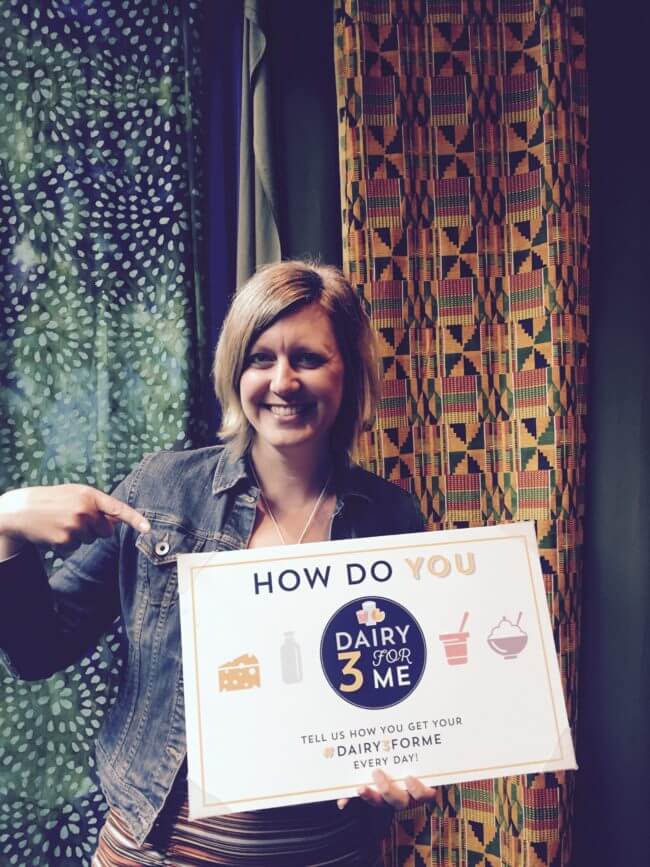What’s The Truth About GMO: Food Biotechnology Series {Part 3}
We have a lot to worry about as moms, should the food we buy at the store be one of our worries? That’s why I am writing this series on food biotechnology. I’m a mom of two kids, of course, I want to feed my kids the best I can. As a registered dietitian, I am seeking out the truth and facts on food biotechnology – more commonly known as GMO (genetically modified organisms). In part one of my blog series, I covered the safety of foods produced with food biotechnology and part two covered benefits of food biotechnology for families. Part three of the series today will focus on the aspect of farming and biotechnology.
Last week, I went to the annual Food and Nutrition Conference and Expo in Houston, Texas. With over 7,000 dietitians in attendance, this was the place to be to hear the most up-to-date information on the science of nutrition. A major theme was food biotechnology. Traveling back home to Minnesota where the fields are full of corn and soybeans, it reminded me of all the work the farmers do to increase production on their land but at the same time being excellent stewards of the land.
My colleague forwarded me an article that recently appeared in the Washington Post on October 15th, 2013. Here is a compelling quote:
“The organizations I found that pass, though, form a compelling coalition. The National Academies, the American Medical Association, the World Health Organization, the Royal Society and the European Commission are all on the same side. Although it’s impossible to prove anything absolutely safe, and all of those groups warn that vigilance on GMOs and health is vital, they all agree that there’s no evidence that it’s dangerous to eat genetically modified foods. Even the Center for Science in the Public Interest is on board, and it has never been accused of being sanguine about food risks.” Washington Post Column on What Is and Isn’t True About GMO
There is no doubt about it: foods produced with biotechnology are safe. There hasn’t been a single instance of harm in the decades we have been consuming them. There is NOT an increase in allergies with foods produced with biotechnology. Opponents of food biotechnology will say that it hasn’t been studied enough. But it’s false. A team of Italian researchers have compiled 1,783 studies spanning from 2002-2012 about the safety and environmental impact of GMO foods. Their research review was published in the Critical Reviews of Biotechnology in September of 2013.
Recently, an article appeared on Forbes.com on this subject and included the following quote:
“In short, genetically modified foods are among the most extensively studied scientific subjects in history. This year celebrates the 30th anniversary of GM technology, and the paper’s conclusion is unequivocal: there is no credible evidence that GMOs pose any unique threat to the environment or the public’s health. The reason for the public’s distrust of GMOs lies in psychology, politics and false debates.” 2000+ Reasons Why GMOs Are Safe To Eat and Environmentally Sustainable
So why are farmers using food biotechnology?
Farmers are gardeners with large equipment. They are stewards of the land and 98% of farms in the United States are family farms. Growing up, I was a part of a family farm raising crops of corn and soybeans. As a nutrition professional and mom, I’ve interviewed and stood in the fields with farmers and heard how a farmer’s goal is always sustainability; now and in the future. Their livelihood depends on it.
Here is what has happened in the fields with the use of food biotechnology:
- A 10% reduction in pesticide/insecticide use since 1996. This may not sound like much, but it is equivalent to a reduction of 1.04 billion pounds of the active ingredient in pesticides/insecticides 1996-2011. This means better soil quality, crop protection, water quality and wildlife safety.
- More reliable harvests. Crops that are protected are healthier and damage free. These crops are developed to target only the insects that eat those crops, not the honey bees or natural predators of crop pests.
- Better weed control. Because crops are protected, it allow farmers to control weeds better, which allows crops to thrive.
- Better soil quality. Biotechnology and good agriculture practices improve soil quality and reduce pollution by allowing farmers to till (turn over the soil) less often or not at all. For example, as of 2009, 65% of soybeans were grown using conservation tillage which reduced soil erosion by 93%. This is equal to saving one billion tons of top soil, the most vital part of a fertile field.
- Reducing carbon footprint. Not having to turn over the soil means less driving in the fields and less carbon released from the soil into the atmosphere. That’s like taking 9.4 million cars off the road.
- Better harvest on the same amount of land. This saves land and wildlife habitats and allows the farmers to be sustainable and responsible. The crops are plentiful, healthier and disease-free.
Farmers provide safe, healthy and sustainable crops. Farmers prefer to be this way. These benefits are not only seen in the United States, but also around the world allowing more developing countries to become food secure.
The next post in this food biotechnology blog series will discuss global impact. Stay tuned, and as always, leave your comments and questions below. And check out the video from www.bestfoodfacts.org:
Resources:
International Food Information Council
Related articles
- What’s The Truth About GMO? Food Biotechnology Series (jenhaugenrd.wordpress.com)
- Food Biotechnology Series: What’s the Truth About GMO (Part 2) (jenhaugenrd.wordpress.com)





[…] What’s The Truth About GMO: Food Biotechnology Series {Part 3} (jenhaugenrd.wordpress.com) […]
Grant,
Thank you for visiting my blog. I appreciate your concerns over pesticide usage. My blog posts are fully based on science-based truths supported by a wide range of health organizations from around the world. GMOs are a controversial topic but I am confident in the information I am providing as a nutrition and health professional.
An excellent resource for you would be http://www.bestfoodfacts.org
Jen
Jen, I just wanted to thank you for using the GMO video from Best Food Facts. If you would like to ask a question about GMOs,or any other food-related topic, from one of our Best Food Facts university experts, please let me know. Best regards, Jennifer – Best Food Facts online community manager.
Thanks Jennifer! Best Food Facts has a wealth of education on what’s really the deal about all these issues. Thank YOU for providing an awesome resource. Just referred some students to it today!
[…] For more information on GMOs, which is really food biotechnology, check out my blog series. […]
[…] GMO – the truth about food biotechnology. If you’ve ever wondered about GMO, you need to read my series, it’s a gathering of facts based on science. […]
Thank you for sharing valuable information. Nice post. I enjoyed reading this post. The whole blog is very nice found some good stuff and good information here Thanks..Also visit my page FMCG Companies jobs .